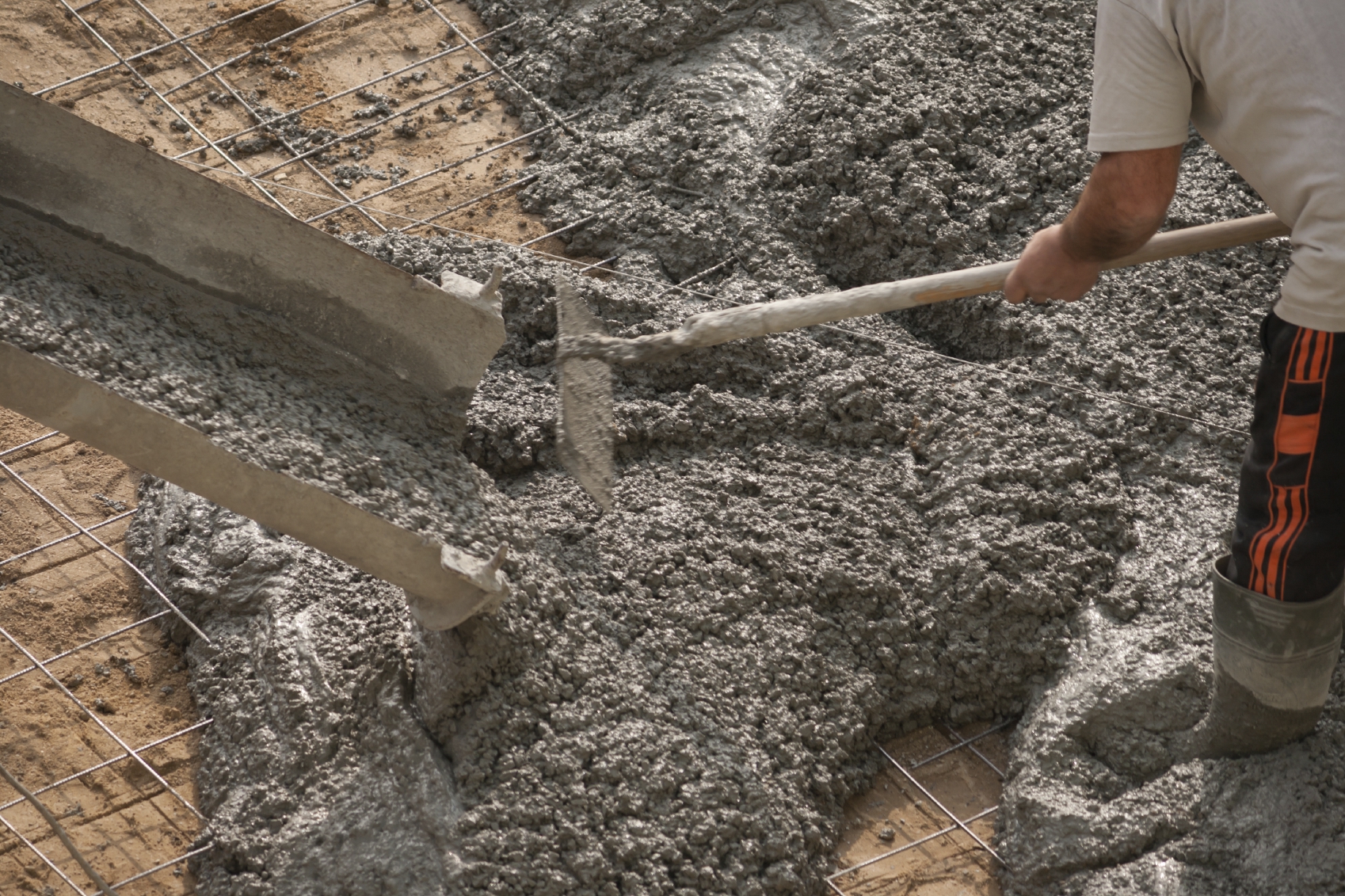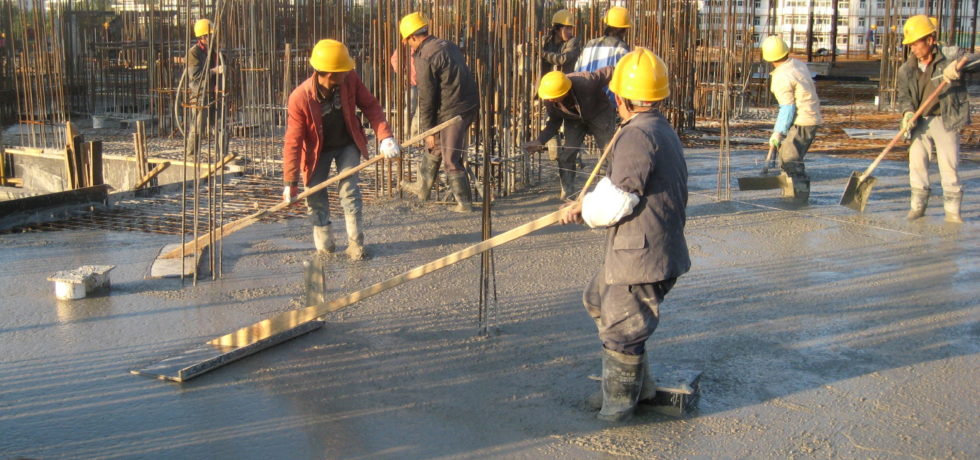The Vital Role of Concrete Structure in Structural Integrity and Longevity
When it comes to developing a property, the structure is a lot more important than you might assume. Concrete foundations give unrivaled toughness and longevity, guaranteeing your framework can endure numerous ecological difficulties. Without a solid base, you run the risk of possible concerns like changing or breaking, which can endanger safety and value. Understanding the nuances of concrete structures can be the key to protecting your financial investment for many years to come. What should you think about following?
Comprehending the Significance of Concrete Foundations
Concrete structures are essential to the general stability of any kind of structure, as they offer the essential support needed to stand up to numerous tons and environmental problems. When you consider constructing a home or a commercial room, the foundation is the very first thing you must consider. It acts as an obstacle versus moisture, protecting your property from water damage. A well-placed concrete structure also prevents settling and shifting, which can lead to fractures in wall surfaces and floors. You'll intend to ensure that the foundation is appropriately created and strengthened, as this influences the durability of your building. Additionally, a strong structure can improve energy performance by lowering air leakages. Remember, ignoring the significance of a concrete structure can result in costly repairs down the line. Investing in a high quality foundation upfront is necessary for the stability and sturdiness of your structure.
Advantages of Concrete Foundations for Architectural Integrity
While lots of elements add to a building's architectural stability, concrete structures use unmatched longevity and strength. You'll value that concrete can endure extreme climate condition, withstanding both moisture and temperature level variations. This strength suggests your framework is much less likely to experience cracking or changing over time, which can endanger its safety.Additionally, concrete's integral weight provides a strong base, preventing activity during all-natural occasions like quakes or floodings. When you select a concrete structure, you're additionally choosing low maintenance; unlike timber, it won't rot or attract parasites, conserving you time and money in repairs.Moreover, concrete's fire resistance offers added safety and security, ensuring your framework can sustain high temperature levels without significant damage. Generally, purchasing a concrete structure means you're prioritizing the long-lasting stability and honesty of your building, making it a sensible choice for any type of construction job.
Common Kinds of Concrete Foundations
When it comes to building foundations, recognizing the usual kinds of concrete structures can assist you make notified selections for your project. One of the most common kinds include slab-on-grade, crawl area, and full basement foundations.A slab-on-grade foundation is an easy, cost-effective choice, where a thick concrete slab is put straight on the ground. This type functions well in cozy climates, as it minimizes warm loss.Crawl area structures elevate the home a little over ground, permitting for ventilation and accessibility to pipes and electric systems. This design can aid protect against dampness issues.Full cellar structures offer additional living or storage area while offering excellent architectural assistance. They require even more excavation and are typically used in colder environments to avoid frost heave.
Variables to Consider When Designing a Concrete Structure

Finest Practices for Setting Up Concrete Foundations
When you're installing a concrete foundation, correct site prep work is necessary to ensure stability (West Coast General Engineering concrete foundation Rancho Cucamonga). You'll additionally require to understand support techniques to improve toughness and longevity. Do not neglect the curing procedure, as it plays a fundamental function in achieving a strong foundation.
Site Preparation Significance
Although it may appear straightforward, correct site prep work is vital for ensuring a strong and resilient concrete structure. Start by clearing the area of any type of particles, vegetation, or natural material that can jeopardize the foundation's stability. Next, assess the dirt kind and compaction; you may require to dig deep into or add products to create a steady base. Degree the ground to guarantee even weight distribution and avoid working out problems in the future. Mounting proper drainage systems is likewise vital to stop water accumulation, which can compromise the foundation over time. Mark out the foundation's dimensions precisely to direct the pouring procedure. By adhering to these actions, you'll establish the stage for a successful concrete structure that stands the examination of time.
Reinforcement Methods Described
When the site is effectively prepared, the following action in ensuring a tough concrete foundation entails executing efficient support strategies. You should begin by using steel rebar, which offers tensile toughness and helps stop breaking. Lay the rebar in a grid pattern, ensuring it's raised making use of spacers to preserve proper coverage. Furthermore, take into consideration using cable mesh for added support, especially in locations based on hefty lots. Do not neglect to link the rebar intersections firmly with wire. For larger foundations, fiber support can improve durability, minimizing the threat of shrinkage fractures. Constantly follow local building ordinance and standards to make certain compliance. By applying these support techniques, you'll significantly enhance your foundation's strength and durability, laying a solid groundwork for your structure.
Curing Refine Essentials
To assure your concrete foundation remedies correctly, it's essential to preserve sufficient wetness and temperature level conditions instantly after putting. Begin by covering the surface area with a damp cloth or plastic bed linen to preserve moisture. This maintains the concrete moisturized, preventing fractures and guaranteeing stamina. You ought to additionally check the temperature level; ideal curing conditions are in between 50 ° F and 90 ° F. If it's too warm, mist the surface area consistently to stop rapid dissipation. For chilly weather, take into consideration utilizing protecting coverings to preserve warmth. Objective for a healing period of at the very least 7 days, as this is essential for ideal strength growth. By adhering to these best practices, you'll enhance your structure's toughness and durability, ensuring structural integrity for years to come.
Maintenance of Concrete Foundations for Longevity
To keep your concrete structure solid and long-term, normal inspections are necessary. You should likewise assure effective drainage services remain in location to avoid water damages. If you spot any kind of splits, click here to find out more addressing them promptly will conserve you from larger issues down the line.

Normal Examinations and Analyses
While normal evaluations and assessments could seem like a duty, they're necessary for preserving the honesty of your concrete structure. By routinely looking for cracks, changes, or indicators of wear, you can catch possible concerns before they escalate into expensive repair services. Seek any kind of water pooling around the structure or unusual settling, as these can signify underlying problems. It's also important to keep track of any type of modifications in your home's structure, like doors that stick or home windows that don't open efficiently. Maintaining a record of your evaluations aids track modifications in time, permitting positive upkeep. Inevitably, these assessments ensure your structure remains stable, sustaining the durability and security of your entire structure. Do not neglect this vital facet of homeownership!
Effective Drainage Solutions
Routine assessments can expose problems like drainage troubles that might jeopardize your concrete structure's stability. To avoid water build-up, ensure your gutters and downspouts straight water away from the foundation. Installing French drains pipes can properly redirect surface and groundwater, minimizing stress on your foundation walls. Furthermore, rating the dirt around your home assists guarantee that water flows away, as opposed to pooling near your foundation.Consider utilizing sump pumps in areas vulnerable to flooding, as they actively eliminate excess water. Consistently inspect for clogs in drain systems and clear them quickly. You'll secure your foundation's integrity and longevity by taking these proactive procedures. Keep in mind, effective water drainage remedies are vital for preserving a strong, durable concrete foundation.
Prompt Crack Fixes
When you see cracks in your concrete structure, addressing them immediately is important for maintaining its durability. Little fractures can rapidly evolve into bigger issues, endangering the architectural integrity of your home. Frequently examine your structure for indicators of damage, such as straight or upright fractures. If you identify any type of, do not wait-- fix them right away. You can make use of epoxy injections or concrete patching substances, which work for securing cracks. Constantly adhere to the maker's guidelines and consider consulting a professional for substantial damage. Keep in mind, prompt fixings not just enhance your structure's resilience yet also conserve you money in the future by preventing much more substantial fixings down the line. Stay positive, and your structure will stay solid and safe and secure.
Dealing With Common Problems With Concrete Structures
Concrete structures can face various problems gradually, making it essential to identify and resolve them without delay. Among the most typical problems is splitting, which can occur due to temperature variations or working out soil. If you see cracks, it's necessary to examine their dimension and depth; little fractures can typically be sealed, while larger ones might need expert evaluation.Water breach is one more significant concern. Excess moisture can lead to mold development and architectural deterioration. Assurance correct drain around your structure to reduce this danger. In addition, seek indicators of changing or bowing wall surfaces, as this can suggest underlying issues with your foundation's stability.Regular assessments are essential to capture these troubles early. If you spot any concerning indicators, don't think twice to seek advice from a structure expert. By staying positive, you can keep the stability and longevity of your concrete foundation, ensuring your home remains safe and secure.
Often Asked Inquiries
How Does Soil Type Affect Concrete Structure Performance?
Dirt type considerably impacts concrete foundation efficiency. If you have actually got large clay, as an example, it can create moving and splitting. Sandy dirt could bring about settling. Understanding your dirt assists guarantee a stable structure.
Can Concrete Foundations Be Repaired if Harmed?
Yes, you can repair damaged concrete foundations. Relying on the level of the damages, strategies like epoxy shot or slab jacking can bring back security. It's ideal to get in touch with a click for more info specialist for efficient services.
What Is the Common Lifespan of a Concrete Foundation?
A concrete structure usually lasts 30 to 100 years, depending upon factors like dirt conditions, climate, and maintenance. You'll wish to keep an eye on it to assure it remains in good form throughout its lifespan.
Exist Choice Materials to Concrete for Foundations?
Yes, there are options to concrete for structures, like steel, timber, or perhaps recycled products. Each choice has distinct advantages and disadvantages, so see it here you need to consider your task's particular demands when selecting the appropriate material.
Just How Does Environment Influence Concrete Foundation Durability?
Environment significantly impacts concrete foundation longevity (West Coast General Engineering commercial concrete). Severe temperatures, moisture, and freeze-thaw cycles can compromise the material, bring about fractures and structural concerns. You ought to think about local environment conditions when planning your foundation to ensure long-term performance